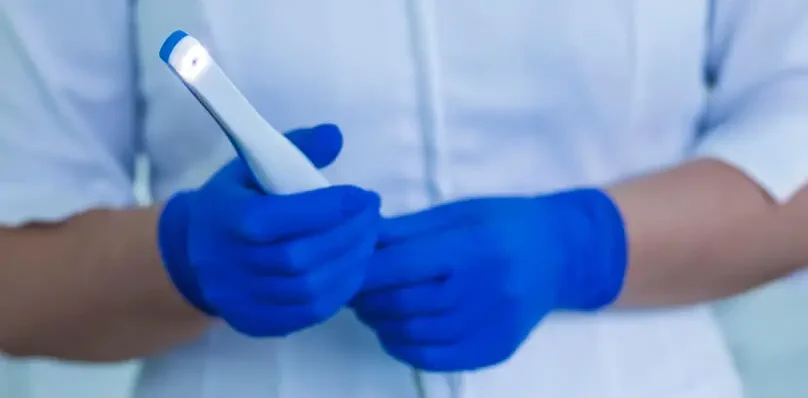In the ever-evolving landscape of modern dentistry, technological advancements continually redefine the way oral health is assessed, diagnosed, and treated. Among these innovations, intraoral cameras stand out as a transformative tool, revolutionizing the traditional methods of examination and patient education. From enhancing diagnostic capabilities to facilitating comprehensive treatment planning, intraoral cameras have become indispensable assets in the dental practice arsenal. This article delves into the intricacies of intraoral cameras, exploring their functionality, benefits, and the profound impact they have had on the field of dentistry.
Table of Contents
ToggleUnderstanding Intraoral Cameras
At its core, an intraoral camera is a small, handheld device equipped with a tiny camera lens designed to capture high-definition images of the oral cavity. These cameras are typically connected to a computer or monitor, allowing dentists to display real-time images of a patient’s teeth, gums, and other oral structures. The compact size and maneuverability of intraoral cameras enable dentists to navigate hard-to-reach areas within the mouth with ease, providing a comprehensive view of the patient’s oral health.
Functionality and Utility
The functionality of intraoral cameras extends beyond mere visual inspection. These devices offer a range of features and capabilities designed to enhance diagnostic accuracy and patient communication. Through magnification and illumination, intraoral cameras enable dentists to identify even the smallest abnormalities or lesions that may go unnoticed during a conventional examination. By capturing detailed images in real-time, dentists can assess the condition of the teeth and soft tissues more effectively, leading to more accurate diagnoses and tailored treatment plans.
Furthermore, intraoral cameras play a crucial role in patient education and engagement. By displaying live images of the oral cavity on a screen, dentists can visually illustrate the nature of dental issues and the recommended course of treatment. This visual aid helps patients gain a better understanding of their oral health status, fostering informed decision-making and active participation in their treatment journey. Additionally, intraoral cameras allow patients to see the results of dental procedures firsthand, providing reassurance and instilling confidence in the treatment process.
Benefits of Intraoral Cameras
The integration of intraoral cameras into dental practice offers a multitude of benefits for both practitioners and patients alike. One of the primary advantages is improved diagnostic accuracy. The high-definition images produced by intraoral cameras enable dentists to detect early signs of dental caries, periodontal disease, and other oral conditions that may not be apparent to the naked eye. Early detection allows for timely intervention, preventing the progression of dental problems and preserving oral health.
In addition to enhancing diagnostic capabilities, intraoral cameras streamline the treatment planning process. By capturing detailed images of the oral cavity, dentists can formulate comprehensive treatment plans tailored to the individual needs of each patient. Whether it’s restorative procedures, orthodontic treatments, or cosmetic enhancements, intraoral cameras provide valuable visual data that guides the decision-making process and ensures optimal treatment outcomes.
Moreover, the use of intraoral cameras promotes transparency and trust between dentists and their patients. By actively involving patients in the examination process and sharing visual evidence of dental issues, dentists empower patients to take ownership of their oral health. This collaborative approach fosters a sense of partnership and accountability, leading to improved patient satisfaction and compliance with recommended treatment regimens.
Also read about the importance of good visibility in dentistry
Impact on Patient Experience
The adoption of intraoral cameras has significantly enhanced the overall patient experience in dental settings. Gone are the days of relying solely on verbal descriptions or static images to convey dental issues. With intraoral cameras, patients can see firsthand the condition of their teeth and gums, gaining a deeper understanding of their oral health status.
This visual representation not only demystifies dental procedures but also alleviates anxiety and apprehension commonly associated with dental visits. Patients feel more involved and engaged in the treatment process, which contributes to a positive and supportive dental experience. Furthermore, the ability to visualize the potential outcomes of treatment instills confidence and reduces fear of the unknown, ultimately leading to greater patient satisfaction and loyalty.
Future Directions and Innovations
As technology continues to advance, the capabilities of intraoral cameras are expected to evolve further, opening up new possibilities for dental diagnosis and treatment. One area of ongoing development is the integration of artificial intelligence (AI) algorithms into intraoral imaging systems. By leveraging AI-driven image analysis, intraoral cameras can assist dentists in identifying subtle abnormalities and predicting the progression of dental conditions with greater accuracy.
Additionally, advancements in imaging technology may lead to the development of intraoral cameras capable of capturing three-dimensional (3D) images of the oral cavity. This enhanced depth perception could revolutionize the way dental professionals plan and execute complex procedures such as dental implant placement and orthognathic surgery.
Furthermore, the miniaturization of intraoral cameras and the advent of wireless connectivity offer the potential for greater portability and convenience. Dentists may soon have access to compact intraoral cameras that can be seamlessly integrated into handheld devices such as smartphones or tablets, further enhancing their accessibility and versatility in clinical practice.
Conclusion
Intraoral cameras have emerged as indispensable tools in modern dentistry, revolutionizing the way oral health is assessed, diagnosed, and treated. By providing real-time visual insights into the oral cavity, these devices empower dentists to deliver more accurate diagnoses, formulate comprehensive treatment plans, and engage patients in their oral health journey. As technology continues to advance, the future holds exciting possibilities for further innovation in intraoral imaging, promising to redefine the standard of care in dental practice and improve patient outcomes.
In summary, the integration of intraoral cameras represents a significant milestone in the evolution of dentistry, marking a shift towards a more patient-centered and technologically advanced approach to oral healthcare. With their multitude of benefits and transformative impact, intraoral cameras have undoubtedly become indispensable assets in the modern dental practice, paving the way for a brighter and healthier smile for patients worldwide.

